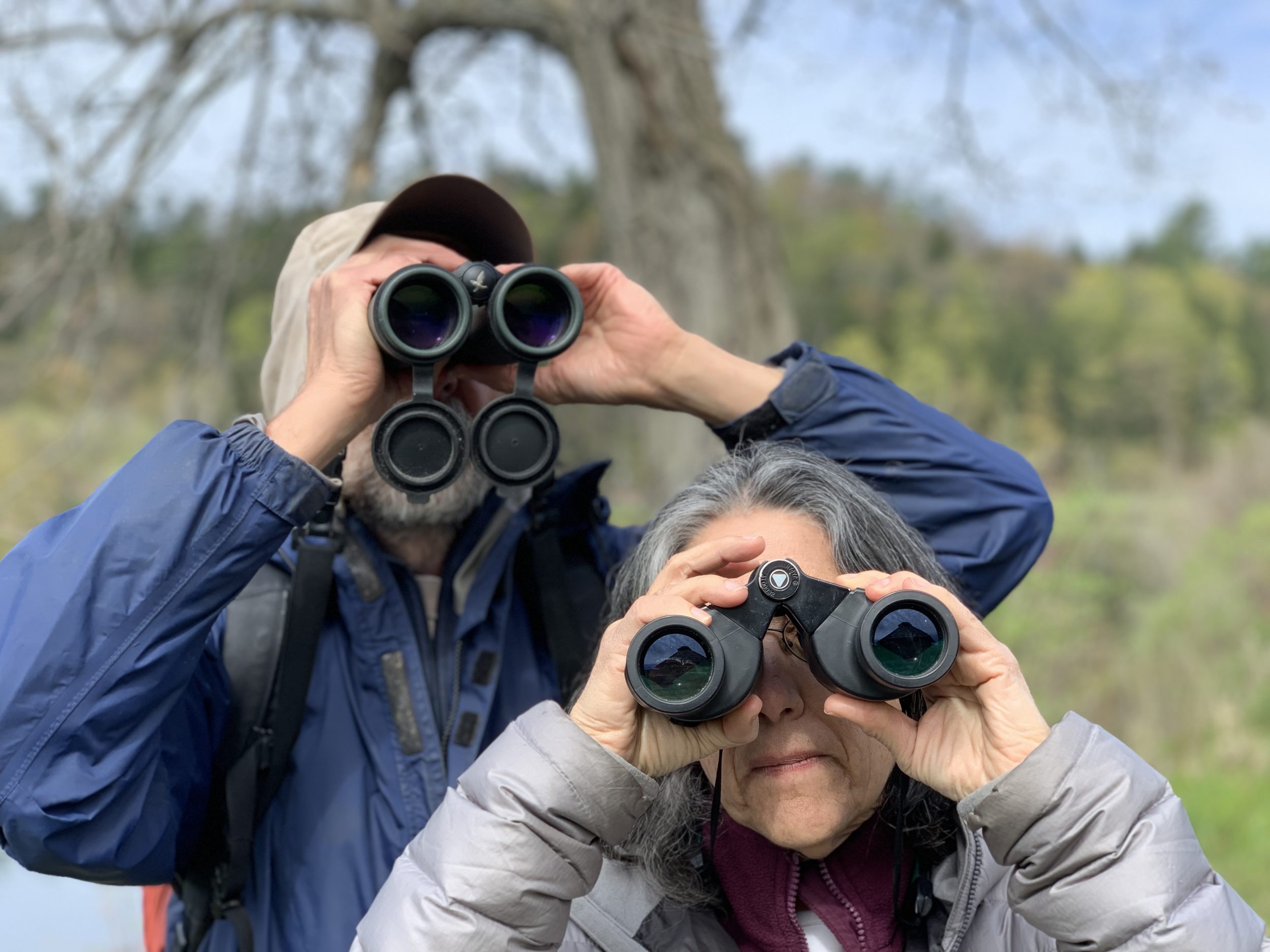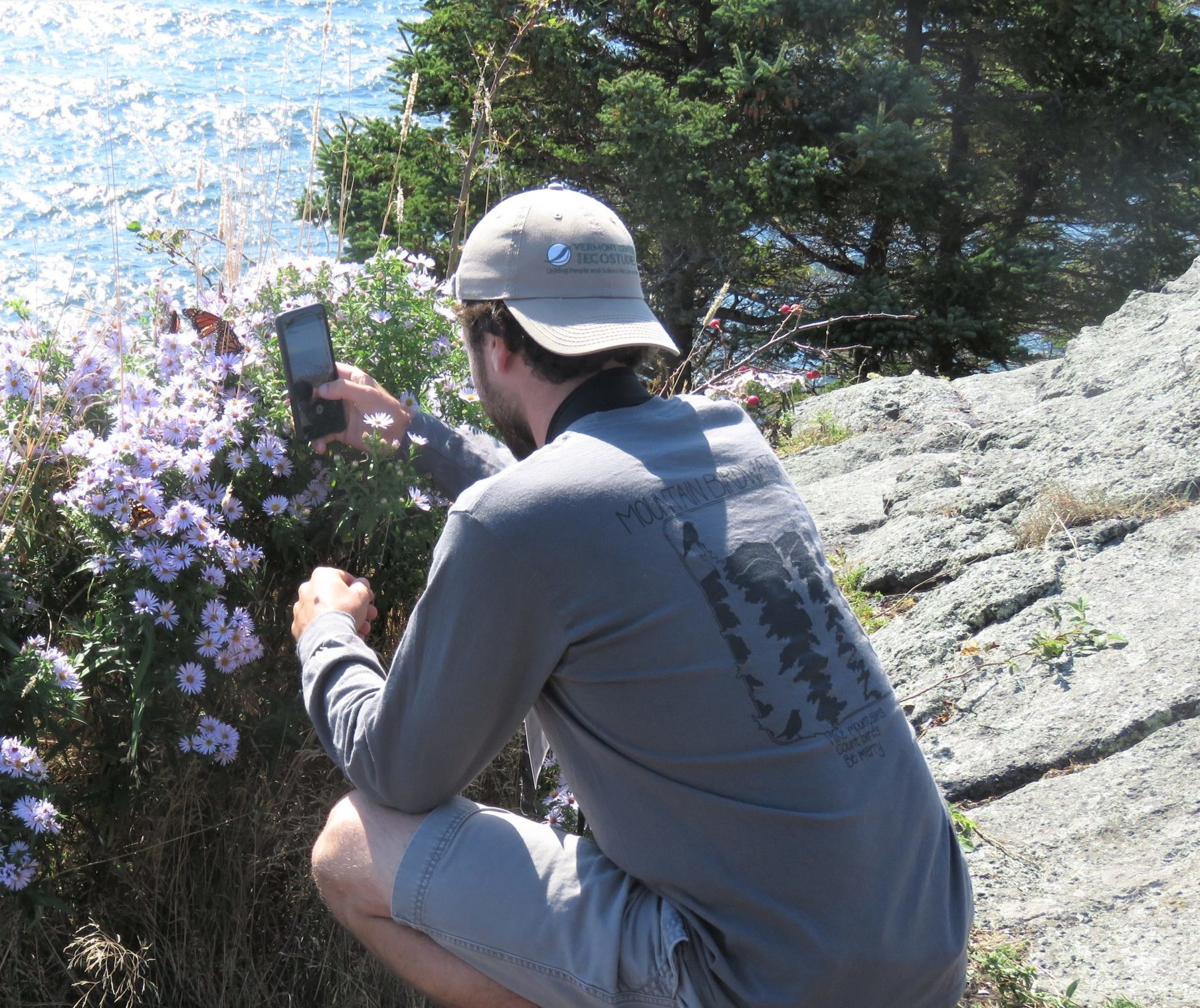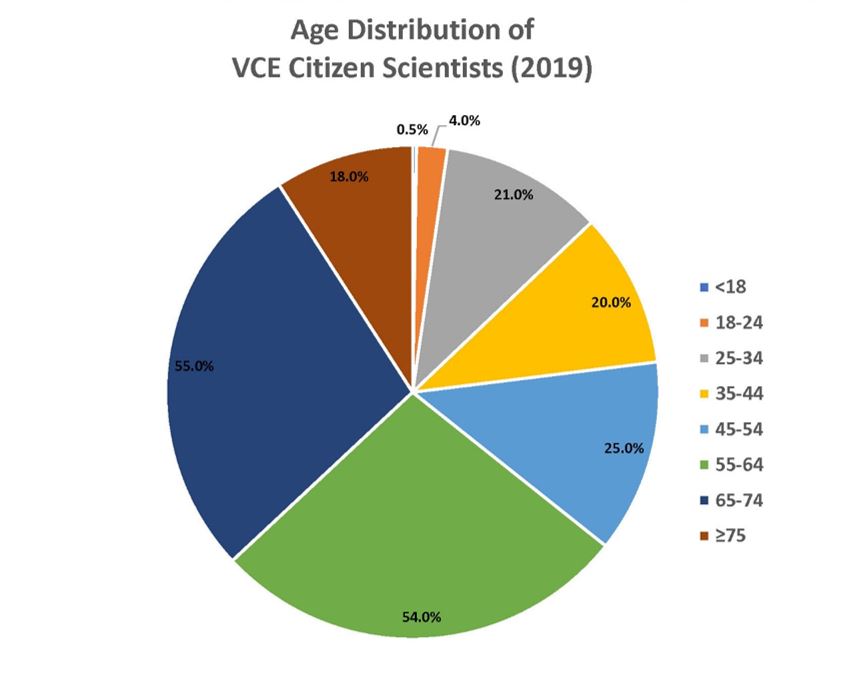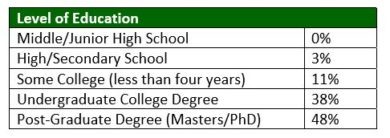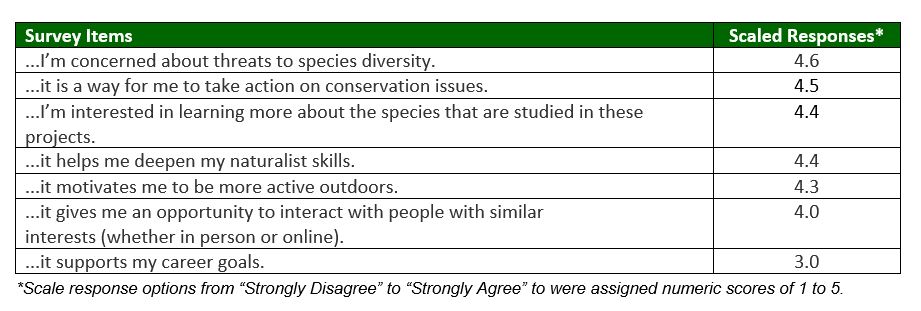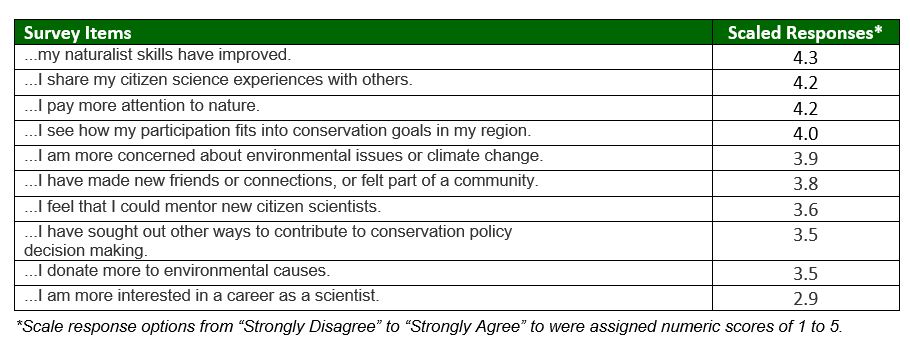One way in which VCE is unique among wildlife research organizations is that our biologists engage—and in fact, depend upon—an army of citizen scientists for the success of our field research and monitoring projects. Our volunteers pour their hearts and souls (and collectively, enormous time and energy) into a range of activities crucial to understanding the state of our natural world.
Because we so value our citizen scientists, we want—and need—to learn more about them. We want to know who they are, what they care about, why they volunteer, and why they choose to donate their time and energy to VCE’s conservation projects. We also want to know how we can enhance their experiences, whether there are any barriers to participation, and how involvement with VCE programs has impacted their lives.
Just as other organizations turn to VCE for help designing wildlife studies, we turned to a team of experts in program evaluation and social science for our inquiry. Peer Associates is a Vermont-based firm that specializes in helping nonprofit organizations undertake program evaluations. This past spring, they helped us design and launch a detailed survey to our 13,800 citizen scientists.
You may be asking, “What? VCE has almost 14,000 citizen scientists??” Well, in essence, we do! Some of our volunteers use crowd-sourced, internet-based tools and databases (e.g., Vermont Atlas of Life on iNaturalist, Vermont eBird, and e-Butterfly) that VCE provides and manages as part of ongoing research and monitoring projects. Others participate in more targeted research and monitoring projects (e.g., Mountain Birdwatch or Loonwatch) by signing up directly with VCE, working closely with project leaders, and following protocols at assigned locations. Many citizen scientists – well over 200, in fact – participate in multiple VCE projects. These dedicated and knowledgeable volunteers truly fuel our research and monitoring projects. Our citizen scientists hail from all over the nation, with a small contingent from Canada and even a few reporting from Costa Rica, Panama, and the United Kingdom!
So, what did we learn? Far too much to include in a blog post! However, here we present several highlights that we find especially interesting.
Demographics
As you’ll see in the pie chart below, a large majority of VCE’s volunteers fall within the 55-64 and 65-74 age groups, while those under 18 represent a mere 0.5%, and volunteers aged 18-24 tally only 4%. This distribution is not surprising, as retirees often have more time available to devote to volunteer activities than younger folks who are still in high school and college. Our volunteers are over 90% Caucasian (reflecting the population of northern New England states pretty closely, which average 85% Caucasian), and the gender split is roughly 60% female and 40% male.
Somewhat surprising to us was the fact that respondents were highly educated, with over 80% holding undergraduate or postgraduate degrees (Table 7). However, one definitely does not need a college degree to participate in the majority of VCE’s citizen science projects!
These demographic data are eye-opening and show us where we need to focus our efforts to engage underrepresented age, gender, racial, and socioeconomic groups to build a more diverse citizen science community.
Motivations to Participate
Survey results make clear that the primary reason our citizen scientists volunteer is concern about threats to species diversity. The table below shows scaled responses to the statement, “I am motivated to participate in VCE citizen science because…”
Reflective of many comments was this one: “I get so much from my involvement in our natural world, it gives me a chance to do at least a small part to help maintain and preserve our wild places and wildlife.” Other common motivations included taking action to conserve nature, recreation, enjoyment, and love for the natural world. Some respondents relayed that participation enhanced their opportunities for social interaction: “sharing with my daughter the love of nature,” and “sharing unusual sightings with others; having others help me identify species,” and “traveling to new places in Vermont and New England, and engaging with people who are interested in learning more about native species and ecosystems.” The motivation to participate in order to deepen one’s naturalist skills was also an important driver: “I’m interested in identifying birds (primarily by song, secondarily by sight), so I’m interested in participating in things that help me increase my knowledge.”
Outcomes from Participation
How are VCE’s citizen scientists personally affected by participation in our programs? It turns out, in many ways! Our citizen scientists are pleased how much their naturalist skills improve as a result of participating, and enjoy sharing their experiences with others. Happily, “I pay more attention to nature” was also a highly ranked response. Raising awareness about the wildlife around us is the first step to understanding how human and non-human ecosystems are interconnected. As it turns out, not only do our citizen scientists help VCE do science, they also help with outreach to others!
The table below shows scaled responses to the statement, “As a result of participating in VCE citizen science…”
Many respondents showed interest in increasing their involvement with VCE citizen science projects either by seeking higher-level tasks or participating in more projects. Others responded with anecdotes such as, “I’m learning about my town. I’ve joined our town’s new Conservation Commission to work on wilderness connectivity,” and “Friends join me on Mountain Birdwatch – they go ahead while I do my survey. I have been able to share the experience with many and help inspire people to care about conservation.” And one response that fills our hearts with joy is, “After hearing Kent on VPR discussing the launch of iNaturalist VT back in January 2013, I reconnected with nature as a citizen scientist. I went back to school to complete my undergrad in biology and now work as an environmental educator and lead a citizen science project myself. Becoming a citizen scientist with VCE was life changing for me.” That is mission accomplished for VCE!
A final notable nugget of insight is that most people learned about VCE citizen science projects from friends, colleagues, family, or like-minded organizations. In a word: networking.
Through this survey, we learned an incredible amount about our existing citizen scientists. We also gained invaluable information about areas of our citizen science programming that need improvement, and as importantly, who we aren’t reaching. If you’d like to join the ranks of VCE’s citizen scientists, please visit our volunteer web page. And, if you participated in our citizen scientist survey – thank you!
